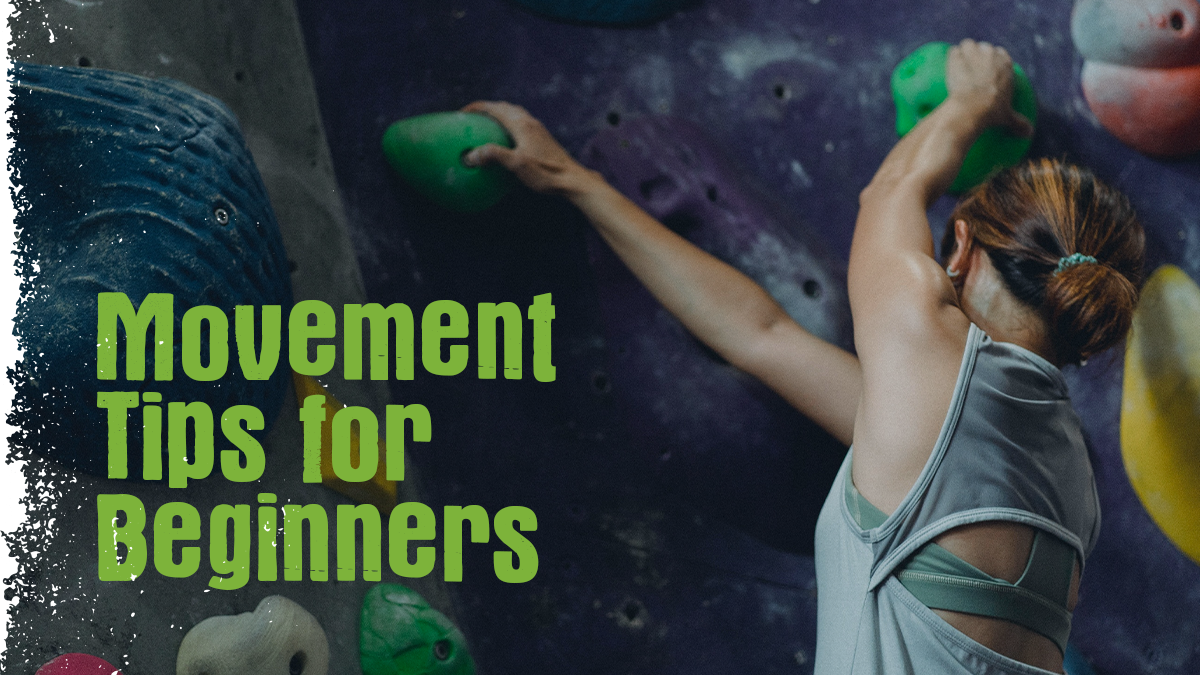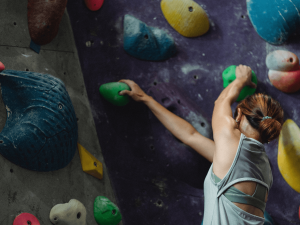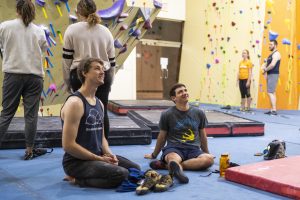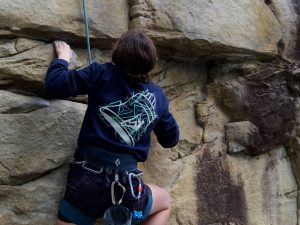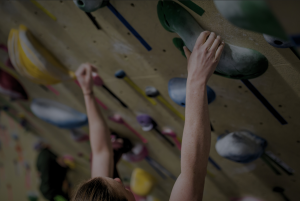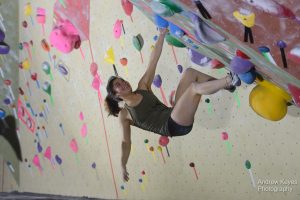At first glance, rock climbing appears to be all upper body strength. Shredded arms with big biceps and lats are noticeable among the strongest climbers. Sure, pure strength and upper-body muscle will aid you in your ascents, but a critical component to climbing success is movement, which is easy to overlook.
Movement. You may ask, how do you have movement? It’s not that you have it but rather that you understand how to maneuver your weight most advantageously. Movement is the essence of climbing. You’ll hear climbing likened to dancing on a wall, or maybe you’ve heard climbers finish a route or problem and come down saying, “That was cool movement!” In the latter, the climbers are referencing the forced movement based on the placement of the climbing holds by the route-setters. The route-setters must understand fundamental climbing movements to design an enjoyable yet challenging climb effectively. The climber must be able to decipher the objective move or find the best body positioning for their success.
Don’t worry if you’ve never consciously contemplated maneuvering your weight on the wall! It may not be intuitive, especially if you’ve just started climbing seriously. As you go along your climbing journey, here are movement tips for beginners to expand your climbing abilities – mentally and physically.
Movement Tips for Beginners
1. Make sure you are actively using your feet.
Right off the bat, we’ll start with a biggie that newer climbers always forget, pay attention to your feet! Climbing is not solely dependent upon upper body strength. Many routes or boulder problems test a rock climber’s ability to create and maintain full-body tension. That tension starts at your big toe and runs to your head.
When climbing and finding it challenging to execute the next move, consciously think about how you are (or aren’t) using your feet. You should be able to feel part of your body weight sinking into your toes. Otherwise, those expensive rubber things called rock climbing shoes were a pointless buy.
All jabs aside, actively using your feet sets you up for successful and continuous upward movement. Otherwise, poor footwork will result in a forearm pump and threatens to land you on the pads or sitting in your harness
.
2. Think about the positioning of your hips.
Move upward from your feet, and the next major component toward mastering movement is to master the positioning of your hips. If it’s easier, think of your hips as the steering wheel of a vessel. In this case, the vessel is your body. By positioning your hips closer to or further away from the wall, you dictate the direction and force of your movement. In most cases, keeping your hips closer to the wall is ideal as it shifts more of your body weight in your lower body and closes the distance between holds. Letting your hips drift out from the wall will often pull you off the wall when you go to move or tire out your arms faster.
Likewise, pivoting one hip towards the wall at a time enables you to redistribute your body weight through your legs and reach higher with your hand. You can learn additional skills to execute, such as the drop-knee, but you’ll discover that in time, and you’re learning plenty to succeed already.
3. Think about your points of contact on the wall.
Rock climbing has funny terminology. One weird term is a ‘barn door.’ When you barn door, it means you are swinging away from the wall so that you start to face outwards, away from the wall. It happens because the only parts of your body connecting you to the wall are your left hand and left foot or right hand and right foot. The single-sided attached creates the swing mimicking the opening of a big barn door.
While it’s possible to stop the swing and reestablish your position on the rock wall, it is easier to avoid such situations whenever possible. The good news is that preventing a barn door is pretty simple if you think about your contact points with the wall. The ideal situation is always to maintain three points of contact. So, if you are moving your left hand, your right hand and both feet are secure on foot/handholds.
However, the ideal situation may not always present itself. In that case, focus on maintaining diagonal contact points, so left hand and right foot, or right hand and left foot. This is ideal rather than having two contact points on the same side because diagonal points of contact allow you to move around a more stable center axis.
4. Think about the order of hand and foot movements.
Like Goldilocks, there is a just right distance between your hands and feet and two not-so-ideal scenarios.
Not-so-ideal situations would be having your hands far from your feet so that you end up stretched out to max reach/length, and the other is having your hands and feet placed on holds very close together, forcing you into a scrunched position. There are exceptions, of course, and either of these scenarios may be optimal, but generally speaking, you are stuck if you find yourself stretched out or scrunched up.
Instead, try to make one upward foot move for every upward hand movement. It won’t be a perfect 1:1, but you should generally move your feet sequentially with your hands. Consciously focusing on sequential movements will ensure you don’t end up with porridge that is too hot or cold.
5. Try out different movement options.
When getting into rock climbing or trying to complete a climb that has you stuck at one spot, it’s easy to watch and copy another climber who scampers their way up the same climb. However, anatomically no two climbers are identical, and therefore no two climbers are guaranteed to complete a climb in precisely the same manner. A route setter will have the intended beta they want to see the climbers execute, but if one method is flinging you off the wall repeatedly, it might be time to try out a new idea. Using the previous four movement tips, evaluate what aspect of movement you cannot hone. Maybe your hands and feet are too far apart, or your hips and weight pull you away from the next hold.
If you can’t pinpoint the exact issue, try doing something different and see if it feels better or worse. Moving efficiently without conscious thought takes practice, trial, and many errors before success. But you did pick rock climbing as your sport of choice, so you should’ve known falling (a lot) comes with the territory.
If you’ve made it here, you are on your way to becoming a movement master. The critical advice to remember is that all movement requires conscious effort until it becomes second nature and that movement that works for you may not work for others and vice versa. Of course, never be afraid to try something new and see how it works out, and let us know if there’s a movement tip or trick we missed that you think others would benefit from in the comment section below!


